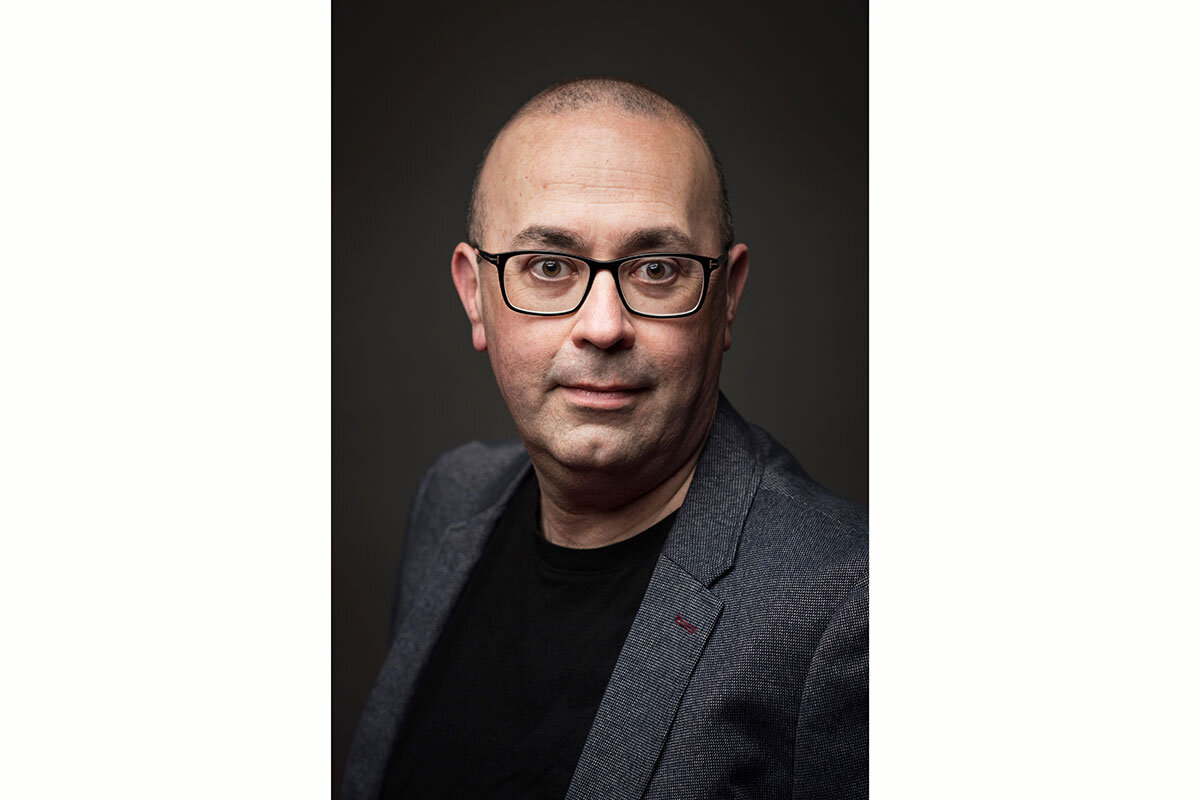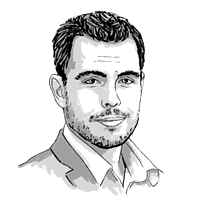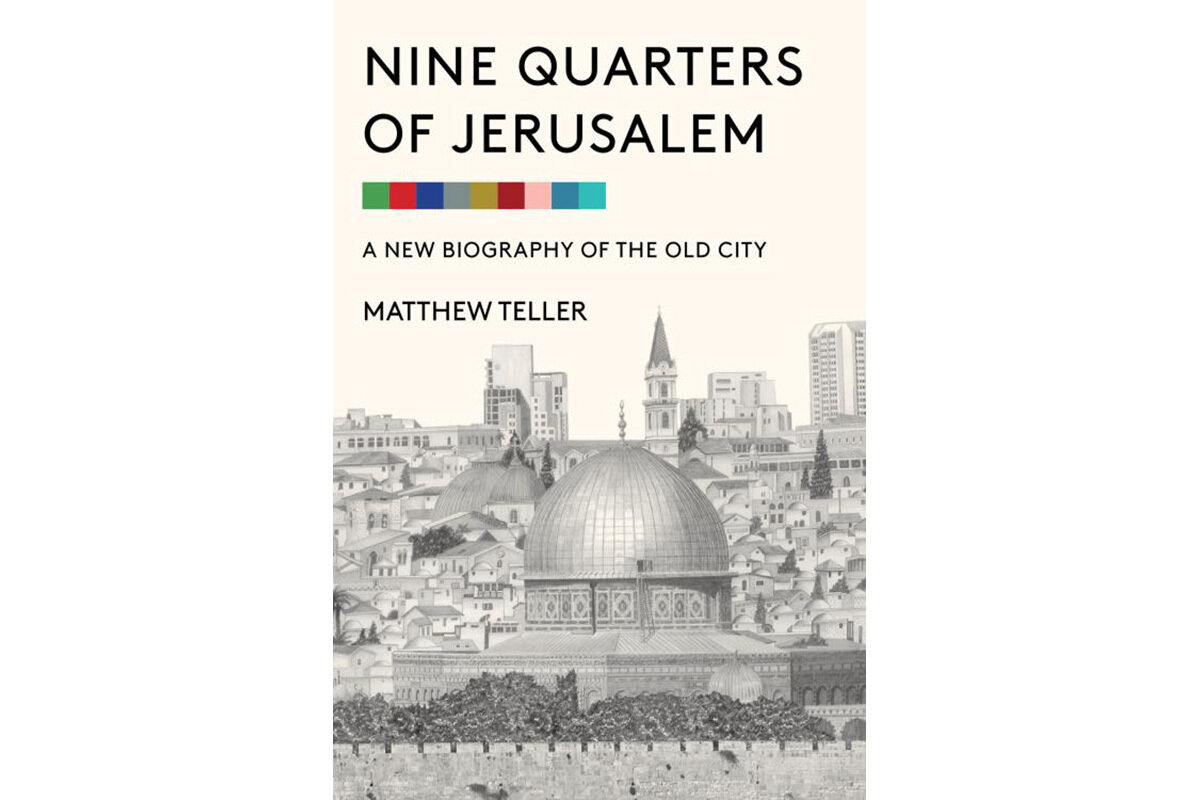Matthew Teller’s Jerusalem: A rich tapestry of humanity
Loading...
Matthew Teller’s name is synonymous with the Middle East. For nearly three decades, the British journalist and broadcaster has written articles and produced documentaries from across the Arab world, Israel, and the Palestinian territories. He also wrote the definitive travel guide to Jordan. In “Nine Quarters of Jerusalem: A New Biography of the Old City,” he turns to a city known across the world but understood by few: Jerusalem.��
Mr. Teller recently spoke with the Monitor on why he believes Jerusalem’s people are overlooked, and how the Old City’s diverse cultures, sects, languages, and traditions defy its “quartering.”��
��Why did you focus on the people, rather than the religious sites, of Jerusalem?
Why We Wrote This
Jerusalem, sacred to the world’s major religions, is a place that millions of people think they know. A veteran Middle East correspondent paints a fuller picture of the Old City as a vibrant mix of cultures, languages, and religious practices.
People who live and work in the Old City have been overlooked politically, economically, and socially throughout the centuries. They have a voice; in fact, they have been yelling for years, but many people in my culture, the English-speaking West, have not been listening. There is a T.E. Lawrence quote that the people of Jerusalem are as “characterless as hotel servants.” There is a basis of racism there. I wanted to amplify their voices.��
How many visits did it take before you felt you really “knew” Jerusalem?
I first came to Jerusalem in 1980 as a child with a British Zionist perspective; Israel was very important to my family, and I contextualized Jerusalem as a Jewish place. Being in Jerusalem as a teenager, I sensed a depth of personality that I did not fully understand – that this place expresses itself in mysterious ways. Over the next 20 years traveling around the Middle East and the Arabian Peninsula, I sought out new ways of reporting on people with different perspectives than those I grew up with. I started to investigate new ways of understanding Jerusalem. After decades of these stories, I felt I had something to say.��
What did you notice about how visitors often treated Jerusalemites?
Going back to Jerusalem repeatedly in my 20s and 30s, I was seeing how people like me – tourists and pilgrims – interacted with the people who live and work in the Old City. We were visiting to tick boxes: pray at this church, visit this mosque, or kiss the Western Wall. I was observing people in the midst of this culmination of their spirituality treating the people of the Old City as obstacles between them and these holy places. “Why is there all this commerce in the Old City? Why are these people getting in my way?” It didn’t seem right to me. It didn’t seem respectful.��
What were the biggest surprises for you researching “Nine Quarters”?��
A particular highlight for me was meeting Maysoon al-Maslohi, guardian of the tomb of Abu Madyan, a Sufi Islamic saint who was the fabled founder of Jerusalem’s North African quarter. To sit in that space, the only surviving building of the Moroccan Quarter, and hear firsthand her family’s experience of the neighborhood’s destruction in 1967 was an enormous privilege. Another was learning about the Karaites, a marginalized group within the Jewish Israeli community who are excluded by the dominant groups who control access to Jerusalem and Israel. A part of the book was to demonstrate that the Old City and Palestinian society are diverse and inclusive of all these marginalized communities.��
Why did you title the book “Nine Quarters” instead of “Four Quarters”?
When we only see Jerusalem as a Muslim Quarter bumping up against a ���Ǵ��� Quarter against a Jewish Quarter against an Armenian Quarter, it summons an image of warring factions at each other’s throats. All of this is nonsense. It is terribly misleading to reduce Jerusalem to four warring quarters, and these undertones impact how people interact with Jerusalemites and how outsiders treat the city. The word “quarter” has its roots in the military; it contains this sense of exclusivity. Once I investigated further, I discovered these quarters were colonial impositions by the British.��
One thing I hope readers come away with is that the quarters system doesn’t reflect the situation on the ground in Jerusalem. The “quarters” have served their time and I think they should be quietly left in the dustbin of history.��
You also bring to life some of Jerusalem’s visitors who have been overlooked by the history books. Are there any that surprised you?
Identifying the first African American to visit Jerusalem. David Dorr was born enslaved and was brought by his slave-
owning “master” on this long tour of Europe and the Middle East. When they got home to Louisiana, his “master” went back on a promise to liberate Dorr, who subsequently escaped, made a new life in Ohio, and self-published his travelogue. His book is an extraordinary testament to himself, his personality, his resilience, and is an example of early travel writing from the perspective of African Americans in the 1850s, which is rare. Dorr is witty, he is deeply compelling, and should be much better known. To be able to give him a bit of a platform – although it comes 150 years too late – was a privilege.��
You also focus on a tomb of a woman on the outskirts of the Old City revered by Muslim, Jewish, and ���Ǵ��� worshippers. Why?
There is a web of stories that link this tomb to the Sufi saint Rabia al-Adawiyya, but also link it to two other significant women identified by ���Ǵ���s as St. Pelagia or by Jewish worshippers as the prophetess Huldah. Being there next to that tomb brought a feeling of unity encompassing all these historical narratives intertwining at one location, which is a very Jerusalem thing.






